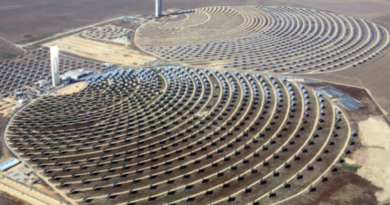Is China adopting a harder line on fossil fuels?
China seems to be toughening up its stance on fossil fuels – or at least starting to – while adding dimension and depth to its clean energy strategy, judging by signals from the country’s latest low-carbon plan. Notably, the new policy blueprint – the first of its kind – intends to “strictly control fossil fuel consumption and actively promote the clean and efficient use of coal” by 2025, with further reductions planned in the following five years. It follows the State Council’s 2024-25 Energy Conservation and Carbon Reduction Action Plan from May, which calls for the country to “strictly and rationally control” coal uses – marking a potential turn from policies in recent years that have kept coal squarely in the mix for reliability and security reasons.
Despite progress in renewables, the phase-down of thermal power – especially coal and gas – has been hard to accomplish in recent years in China. Thermal power still accounted for around two-thirds of China’s electricity generation in the first half of the year, despite making up only 45% of total installed capacity.
Yet the blueprint states that by 2030, when China aims to peak its emissions, non-fossil energy will reach 25% of national energy consumption – a target already reached in power, but that would represent major cuts in fossil fuel market share in other sectors. The 25% target is consistent with the country’s proposed Nationally Determined Contribution to the Paris climate accord – which experts expect to be achieved years ahead of schedule, given China’s fast deployment of renewable capacity. China has pledged to peak carbon emissions before 2030 and achieve carbon neutrality before 2060.
To replace coal, the blueprint deepens strategic planning on this front, emphasizing the development of renewable power sources other than the widely popular solar photovoltaics and wind – sources like biomass, geothermal and ocean energy – while promoting clean energy uptake in sectors like industry and transport. Crucially, storage is eyed as a top focus in the blueprint: By the same year, 2030, the country aims to have over 120 gigawatts of pumped storage capacity, a near tripling of current levels.
Tougher on Transport
The transportation sector is a major focus of the new policy, with the sector accounting for 10% of China’s emissions, aiming to reduce carbon emissions from operational transport by 9.5% from 2020 levels by 2030. On the surface, that’s a fairly low mark, considering passenger electric vehicle (EV) sales made up 51.1% of the country’s auto market in July – a milestone unmatched globally. Yet the 9.5% target encompasses many transport modes, including those harder to decarbonize – namely shipping, aviation and non-road mobile machinery while accelerating the phase-out of outdated transportation methods such as diesel trucks, buses and conventional fossil fuel-powered vehicles.
EVs are a mainstay in the blueprint, as they’ve been in the past, but China is now looking ahead to deeper market penetration rates past the 50% mark. “By 2035, new [EVs] should become the mainstream in new vehicle sales,” states the plan. Experts credit the momentum to the country’s trade-in program, which incentivized 450,000 registrations by the end of July, according to the Ministry of Commerce.
Prices for EVs have also been falling, driven by intense competition in the domestic market. Automakers, led by BYD, are increasingly competing in the affordable EV market, with nine of BYD’s models priced under 100,000 yuan ($14,000). One of the latest additions to this segment, the Seal, boasts an impressive 2,100 kilometer (1,300 mile) range. The China Association of Automobile Manufacturers, an industry body, projects that EV sales will hit 11.5 million units this year, a 21% year-on-year increase and a new record.
The blueprint offers some next steps in other sectors – calling for expanding industries such as cleantech manufacturing and low-carbon upgrades to heavy-emitting sectors including steel and petrochemicals, another huge source of China’s emissions.
New Stage for Power
On the clean power front, China has seen rapid growth in capacity. In the first half of this year, the country installed over 125 GW of solar and wind capacity, accounting for 84% of total new installations. According to the International Energy Agency’s World Energy Investment 2024 report, China is projected to invest $680 billion in clean energy this year (in power and elsewhere), surpassing the combined investments of the US and the EU.
China’s approach to the power sector is now evolving to the next phase, with experts highlighting the need for a more flexible and smarter grid. In that vein, the blueprint calls for accelerating the development of a “new power system,” a concept first introduced in 2021, to better integrate clean power generation, energy storage and flexible, intelligent grids. China plans to construct integrated power and storage projects to optimize system efficiency and stability through coordinated interaction between energy production, storage and grid management.
The framework also promotes the development of microgrids and virtual power plants, in an effort to enhance grid safety and flexibility. China is already working to reform its power market to better accommodate renewable energy, promoting a market-based trading platform for renewable electricity and establishing a unified national power market with spot and futures trading to increase efficiency.
The policy framework further underscores the importance of emerging technologies like hydrogen energy and carbon capture, utilization and storage (CCUS) in China’s low-carbon transition – but offers few new details. It seeks to boost renewable hydrogen production, expand infrastructure and develop industry standards for hydrogen storage and distribution. The government also looks to strengthen the hydrogen supply chain and increase the number of hydrogen refueling stations nationwide. On the CCUS front, the plan is more vague, stating that “green transition technologies will be prioritized as key focus areas in national research and development programs,” with an emphasis on CCUS.
Despite cost challenges, the development of these areas is already in full swing, with state-owned companies rushing to build green hydrogen and CCUS projects. Beijing plans to leverage finance and fiscal policies to drive the transition blueprint, supporting low-carbon technologies such as CCUS through tax incentives and extended financial mechanisms. The new plan seeks to direct financial resources toward green projects and aims to spur investments in green technologies and infrastructure development.
Bottom Line
Ultimately, what matters for China’s climate objectives is whether the planned growth in renewables, hydrogen and CCS will successfully outpace and overshadow the longstanding dominance of unabated fossil fuels – and, given global climate ambitions, how quickly this occurs. In recent years, China has backtracked on that front, but that trend may be turning a corner if the blueprint’s signaling results in serious cuts in the market shares of coal and oil. Now, the real test and juggling act lies in China’s ability to deliver deeper emissions cuts and eat away at the market share of fossil fuels – while still balancing reliability and security needs, which are not going away.
Yinxing Zhang is an energy transition reporter at Energy Intelligence. A version of this article originally appeared in EI New Energy.
Source: energyintel.com




